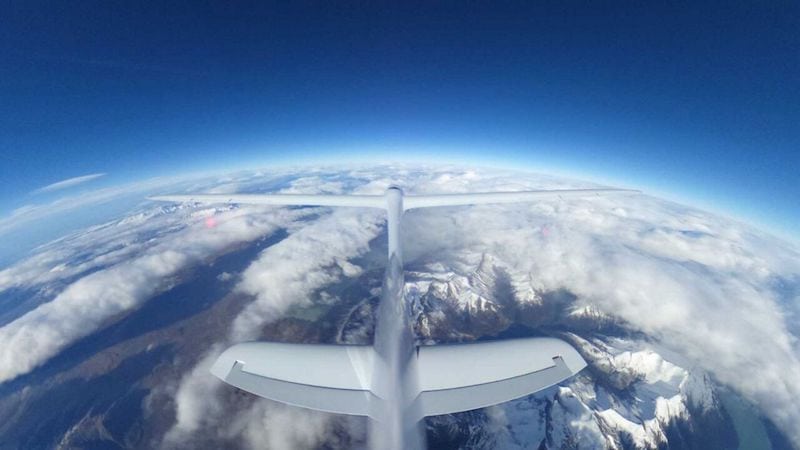
Perlan II at 30,000 feet. Photo courtesy of Airbus Perlan Project
Airbus’ Perlan reached a new high altitude during its second season of flight testing, Airbus said. The Airbus Perlan Mission II aims to fly a glider without an engine to the edge of space to collect data on climate change, weather, high-altitude flight and radiation effects on pilots and aircraft.
The Perlan II glider reached 32,500 feet during the tests in El Calafate, Argentina. Airbus said El Calafate if one of only a few places on Earth “where a combination of mountain winds and the polar vortex create the world’s highest ‘stratospheric mountain waves.’” These waves are rising air currents that Airbus said Perlan pilots believe can eventually carry the aircraft to the edge of space. Perlan differs from a weather balloon in that it can be steered, can stay in one area and can takeoff and land in the same location.
“As demand for air travel rises, and we are faced with questions about how to safely and more efficiently transport a growing population, the insights that Airbus Perlan Mission II will be collecting are invaluable,” said Allan McArtor, chairman of Airbus Americas. “Perlan’s discoveries will help us shape the future of aerospace with innovations related to design and engineering, more efficient air travel and even aviation science related to travel on Mars.”
Airbus said that over the next two months, the exploration team — composed of all volunteers — will attempt to break the world gliding altitude record. Airbus said the record is 50,727 feet, set by Einar Enevoldsen and Steve Fossett in Perlan 1 back in 2006.
Along with Airbus, sponsors of the nonprofit Perlan Project include Weather Extreme Ltd, United Technologies and BRS Aerospace.